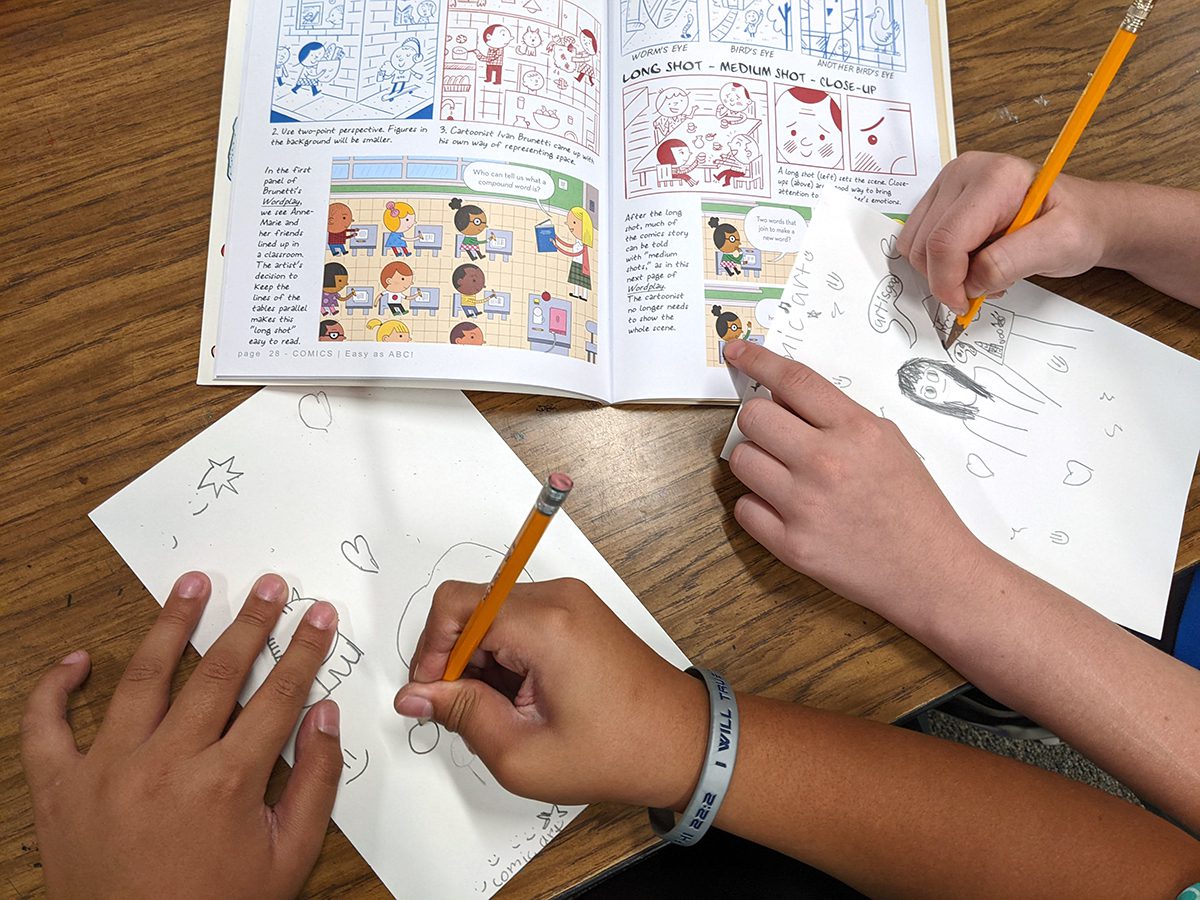As teachers, we strive to build connections with students and make our classrooms feel welcoming. Positive student-teacher relationships are at the center of teaching. Rita Pierson noted in her famous TED talk, “Kids aren’t going to learn from someone they don’t like.” In the art room, we especially want our students to be engaged. Your connections with your students have the power to spark a love of learning and lifelong appreciation of visual arts. As we get back in the groove after winter break and approach a new semester, let’s refocus on solidifying rapport with our student artists.
These six ideas will help you build relationships with your students and increase engagement in the art room.
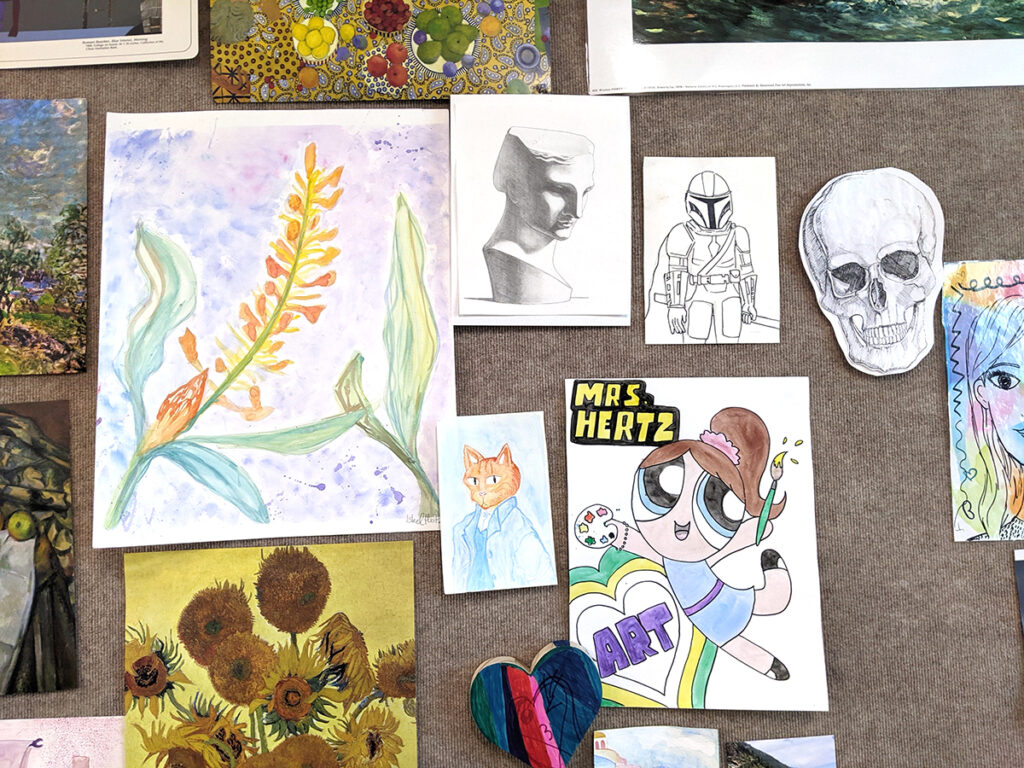
1. Share who you are.
Build connections with your students by sharing who you are and being authentic. Talk about what you were interested in at their age, such as sports, movies, books, events, and aspects of pop culture. Share what was popular from your childhood. It may surprise you to find similarities with what is trending now. My Pokemon-obsessed students are always shocked and excited to learn I had my own set of trading cards in the early 2000s.
Spark conversation by displaying popular icons in your room. My drawings of pop culture, such as the Mandolorian and PowerPuff Girls, give my students a common point of interest to connect with me.
2. Brainstorm together.
One way to engage and connect with students is to ask for and consider their feedback. As the art teacher, you should always have your lessons planned and prepped so they align to standards and your scope and sequence. Also, preview all material and resources before showing them to your students. However, you can build opportunities for student feedback throughout the learning process.
For example, Jen Stark makes technicolor-dripping artworks that cover clothing, sculptures, and the sides of buildings. Introduce Stark and do a short activity with your students. If they enjoy the activity and are curious to learn more, take that into consideration when you plan the next unit! Students can create a spectacular large-scale paper mural in your school inspired by her work.
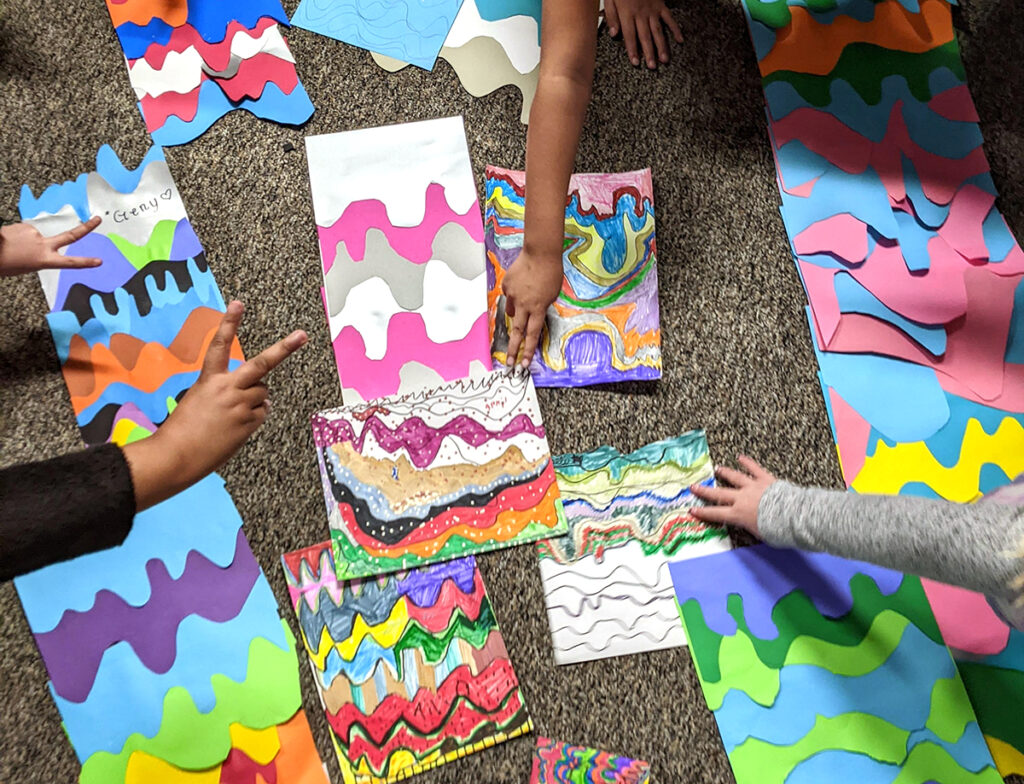
Are you unsure how to find new artists to share with your students? Try these ideas:
- Follow artists on social media.
- Reach out to a local arts council or organization.
- See what art teachers share on social media.
- Visit local art museums.
- Invite local artists to come into your classroom either in person or online.
3. Teach a comic art lesson.
Include themes and styles students are interested, in like comic art. Introducing comic art allows students to make choices and voice their opinions. Bringing comic art into the art room gives students an outlet to express their emotions and thoughts in an informal and familiar format. From comics, you can move into the worlds of illustration, photography, and animation.
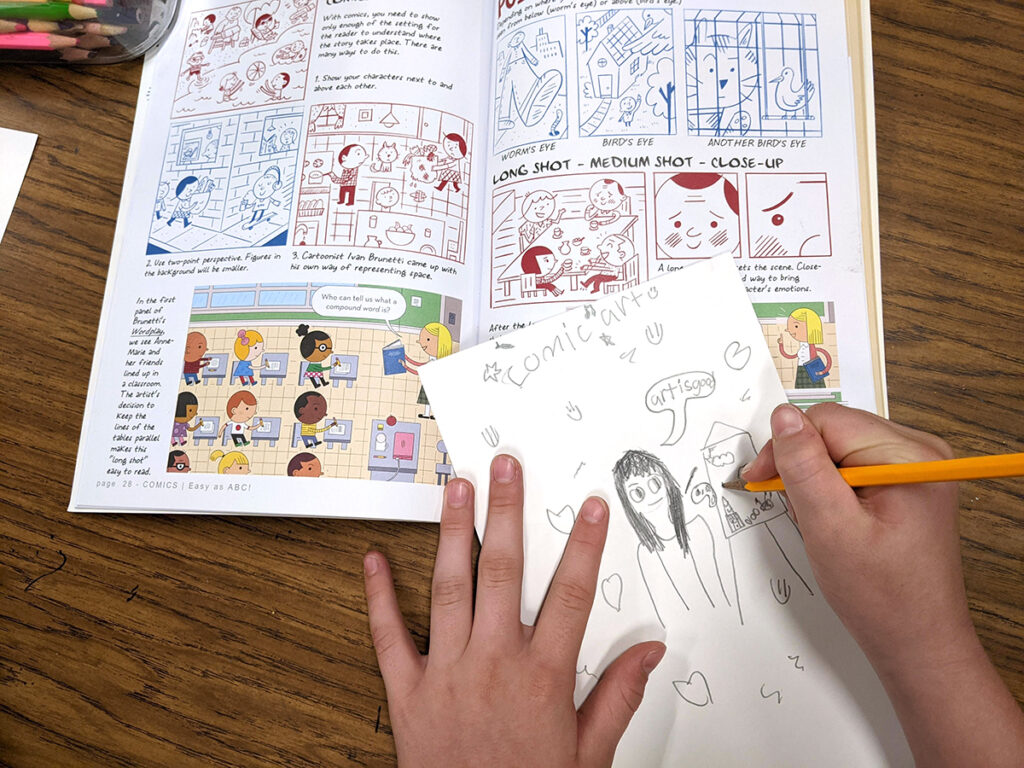
In the Folded Comic Books Lesson in FLEX Curriculum, beginner artists create a 6–8 page book out of one sheet of paper. In their handmade books, students write and illustrate a comic. The lesson plan includes standards aligned to all 50 states, lesson objectives, steps, and student-facing instructional materials, like the one below. Fill out this quick contact form to learn more about FLEX and how you can get this lesson for your students.
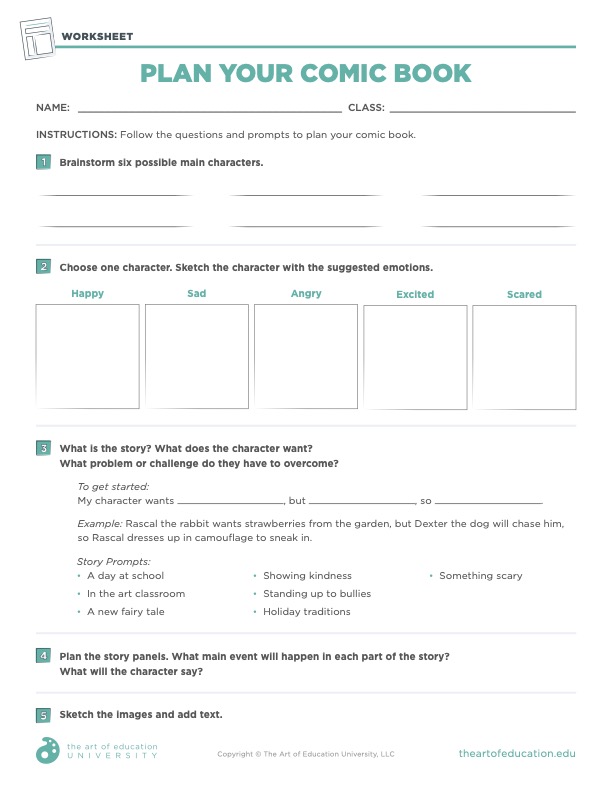
4. Harness social media.
Take the time to form relationships with students by finding points of connection. Our world today is widely connected through social media. In the art room, you can use social media as a powerful advocacy tool by posting student artwork on a professional account. Remember to adhere to your district and school policies around social media use and preview all content before determining what is appropriate to share with your students.
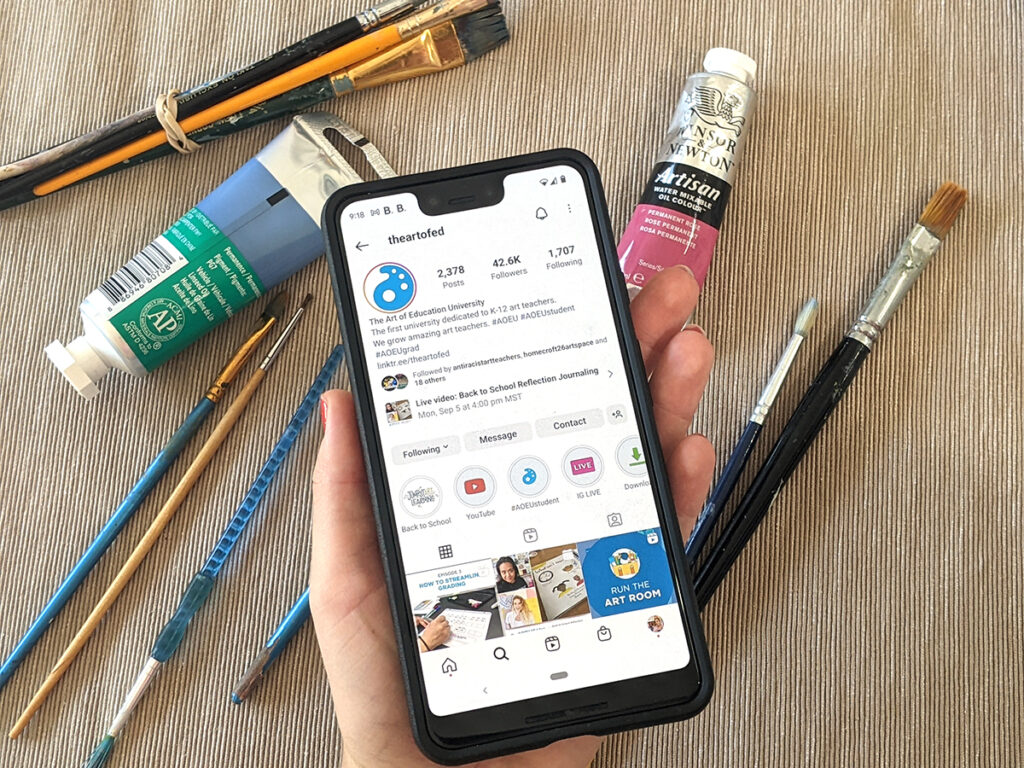
5. Find artwork on TikTok.
TikTok is a social media platform for sharing short videos. This app can be used for educational purposes, but be cautious and follow the guidelines above in the previous tip. Because many videos on this platform are not appropriate for the classroom, download singular videos to embed in your lessons.
Consider making an art teacher account to record short tutorial videos to share with your students. You can also share contemporary artists on TikTok. More and more organizations are sharing information in fun and engaging ways through TikTok videos.
Here are some art museums that are currently using TikTok:
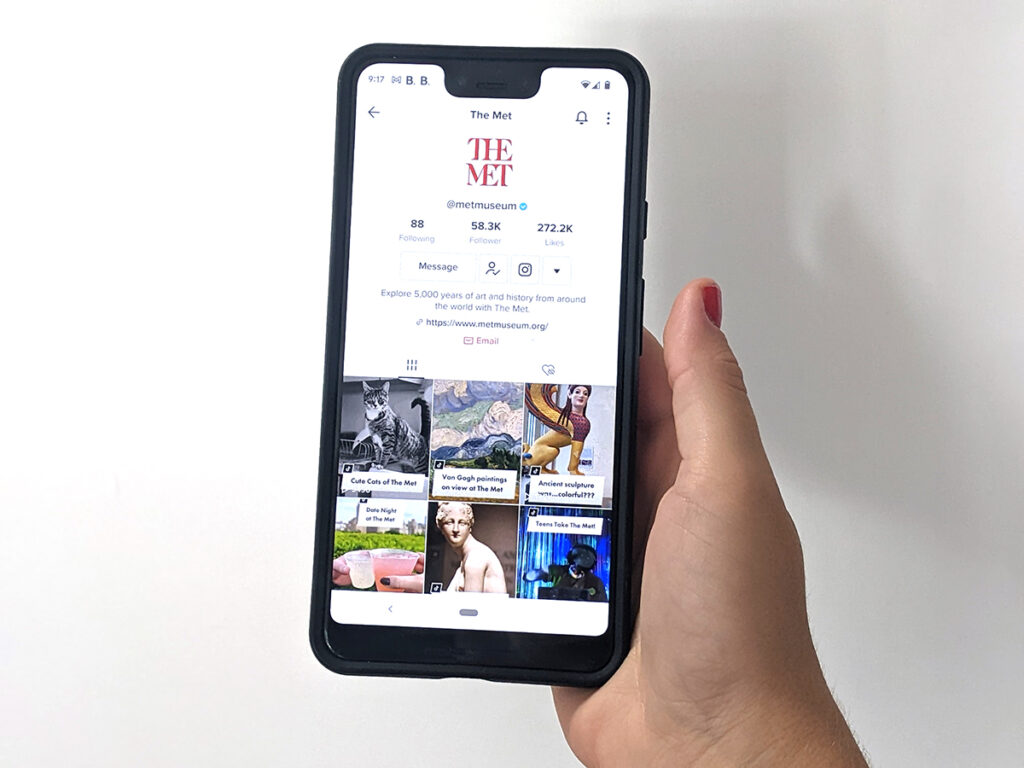
6. Ask questions.
Talking with your students in an informal setting can build great relationships. In art class, there are usually 20 to 30 minutes of artmaking time. Stand or sit near your students and ask them a few individualized questions. These questions can be about anything, like their favorite movies, video games, or food. Jot down a few notes on your seating chart to remind you about their fun facts, and use them to inform future questions and chats. Asking questions can also provide insights about students who have specific needs and can benefit from more support in their learning.
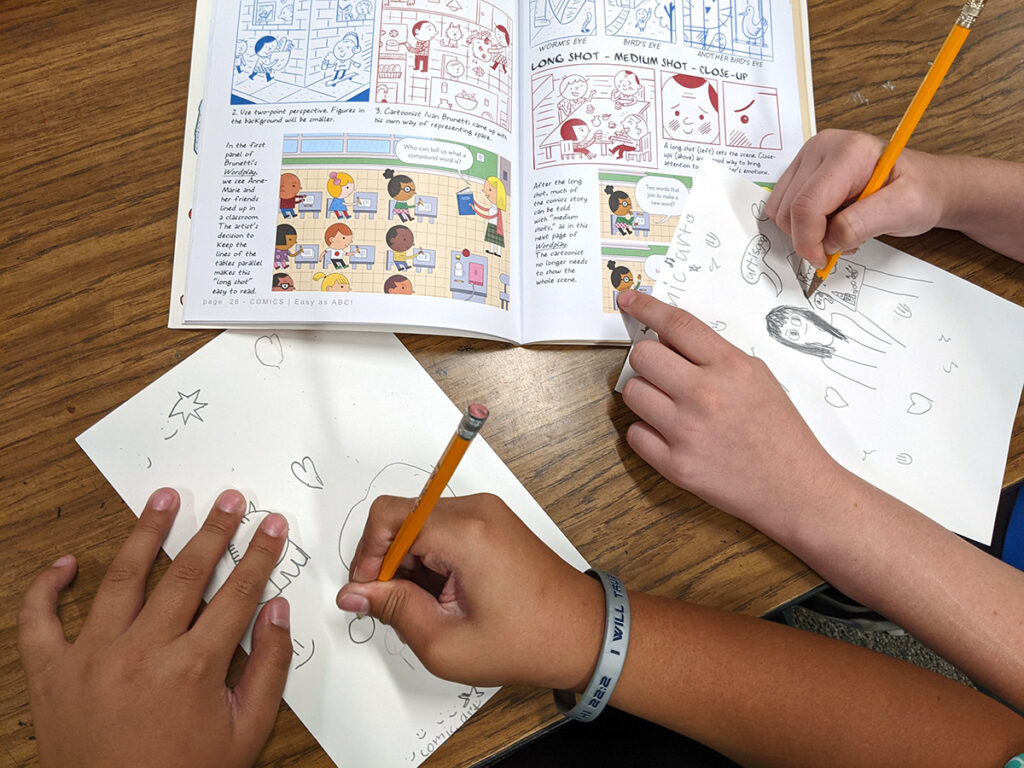
When you build positive student-teacher relationships first, students will genuinely want to be in your class. It will have a trickle-down effect on their learning, and they will be more open to fostering an appreciation for the visual arts. Connecting with your students doesn’t have to be difficult. Cultivate relationships in your everyday teaching practice by asking questions, using social media, and finding common interests. Make your art room a favorite and welcoming place students remember for years to come!
How will you strengthen relationships with your students this semester?
What tips do you have for connecting with students?
Magazine articles and podcasts are opinions of professional education contributors and do not necessarily represent the position of the Art of Education University (AOEU) or its academic offerings. Contributors use terms in the way they are most often talked about in the scope of their educational experiences.
